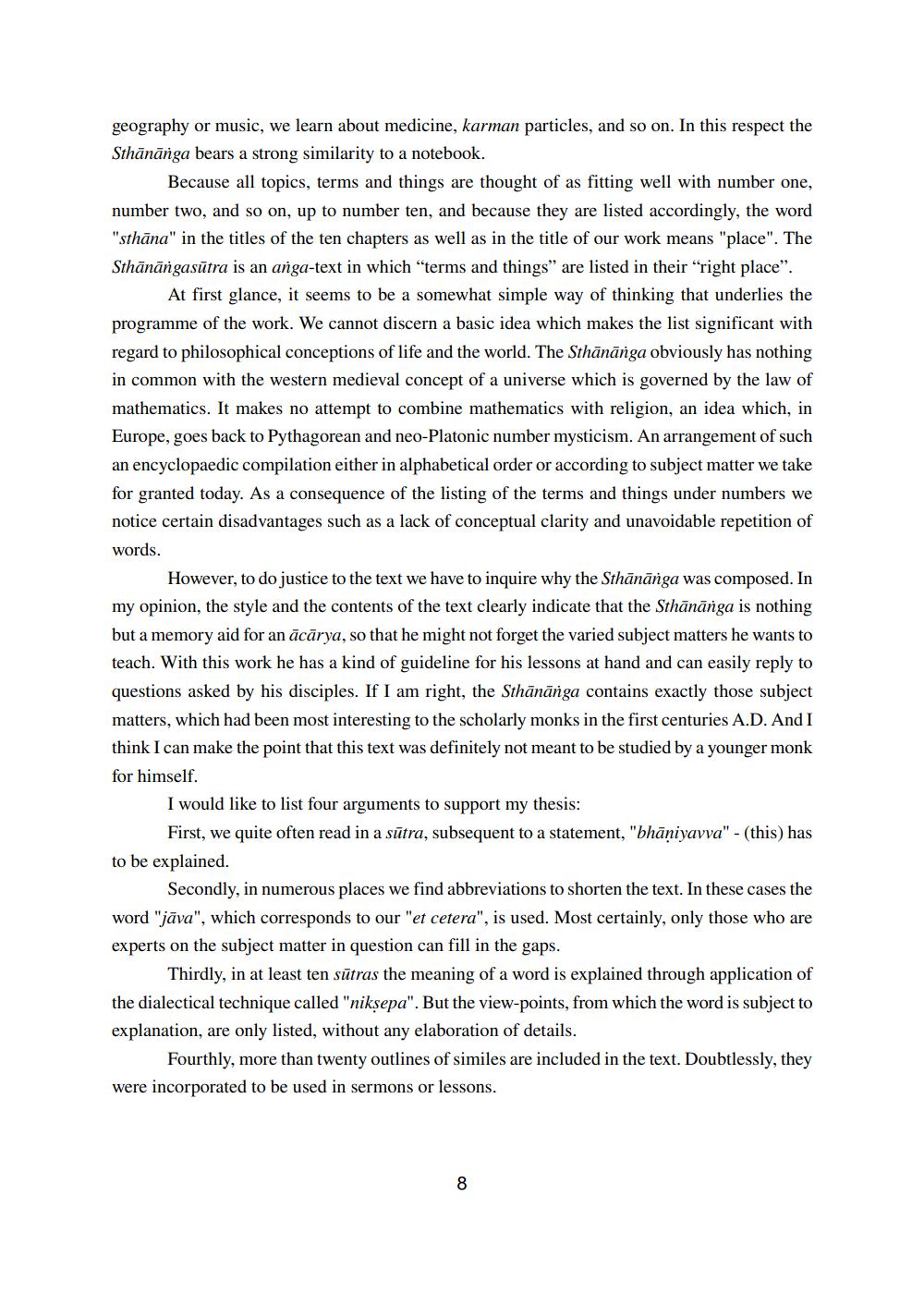Book Title: Sthanangasutra Author(s): Kornelius Krümpelmann Publisher: ZZZ Unknown View full book textPage 8
________________ geography or music, we learn about medicine, karman particles, and so on. In this respect the Sthānānga bears a strong similarity to a notebook. Because all topics, terms and things are thought of as fitting well with number one, number two, and so on, up to number ten, and because they are listed accordingly, the word "sthāna" in the titles of the ten chapters as well as in the title of our work means "place". The Sthānāngasūtra is an anga-text in which terms and things" are listed in their "right place". At first glance, it seems to be a somewhat simple way of thinking that underlies the programme of the work. We cannot discern a basic idea which makes the list significant with regard to philosophical conceptions of life and the world. The Sthānānga obviously has nothing in common with the western medieval concept of a universe which is governed by the law of mathematics. It makes no attempt to combine mathematics with religion, an idea which, in Europe, goes back to Pythagorean and neo-Platonic number mysticism. An arrangement of such an encyclopaedic compilation either in alphabetical order or according to subject matter we take for granted today. As a consequence of the listing of the terms and things under numbers we notice certain disadvantages such as a lack of conceptual clarity and unavoidable repetition of words. However, to do justice to the text we have to inquire why the Sthānānga was composed. In my opinion, the style and the contents of the text clearly indicate that the Sthānānga is nothing but a memory aid for an ācārya, so that he might not forget the varied subject matters he wants to teach. With this work he has a kind of guideline for his lessons at hand and can easily reply to questions asked by his disciples. If I am right, the Sthānānga contains exactly those subject matters, which had been most interesting to the scholarly monks in the first centuries A.D. And I think I can make the point that this text was definitely not meant to be studied by a younger monk for himself. I would like to list four arguments to support my thesis: First, we quite often read in a sūtra, subsequent to a statement, "bhāniyavva" -(this) has to be explained. Secondly, in numerous places we find abbreviations to shorten the text. In these cases the word "jāva", which corresponds to our "et cetera", is used. Most certainly, only those who are experts on the subject matter in question can fill in the gaps. Thirdly, in at least ten sūtras the meaning of a word is explained through application of the dialectical technique called "niksepa". But the view-points, from which the word is subject to explanation, are only listed, without any elaboration of details. Fourthly, more than twenty outlines of similes are included in the text. Doubtlessly, they were incorporated to be used in sermons or lessons.Page Navigation
1 ... 6 7 8 9 10 11 12
